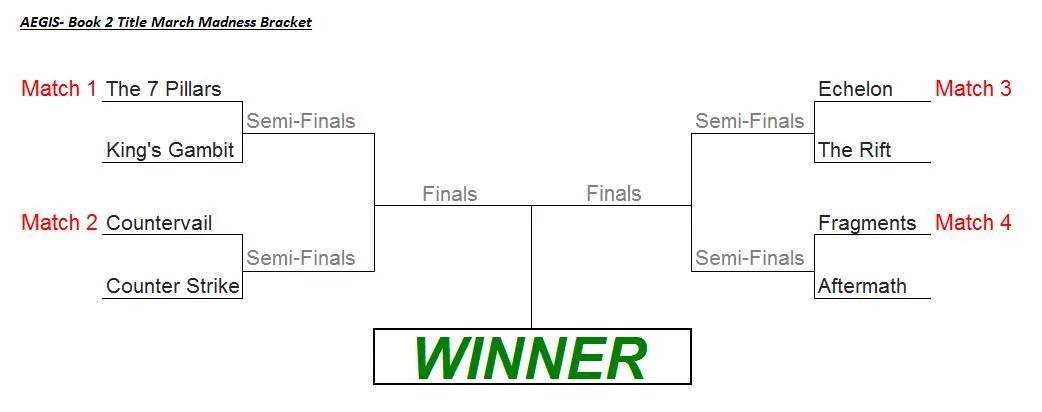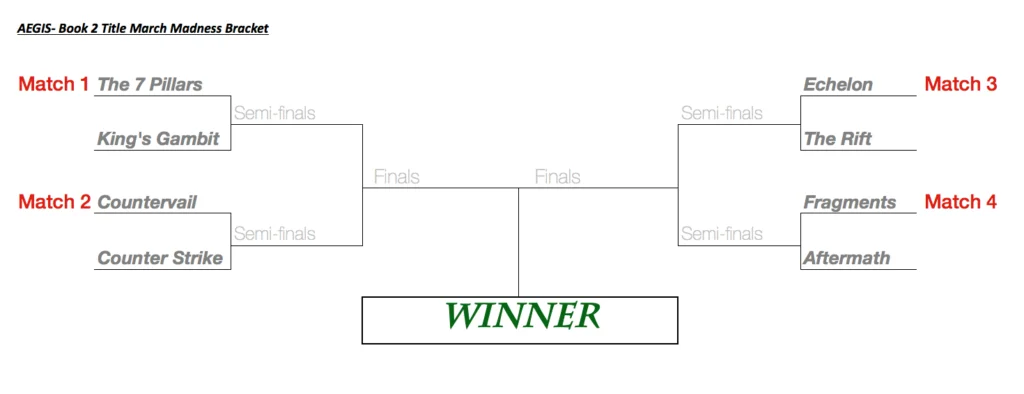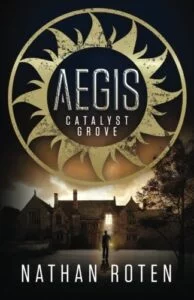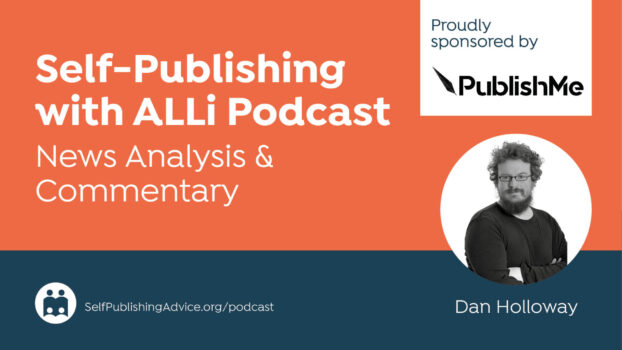Choosing the right title before you launch your book is obviously a very important factor in attracting the right readers, but where to start? Authors who are trade published are likely to have the matter taken out of their hands, but as indies, the buck stops with us. Some authors know what they'll call they book from very early in the process, but if you're undecided, you might like to try the Title Bracket method for identifying the best book title, which Nathan Roten describes here using as an example his latest self-published book.
While the cover and description of your book are major factors, if the title does not produce the desired emotion in the potential reader, if it does not excite, intrigue, mystify or inspire, then these other elements may not have an opportunity to do their part. We need our title to work in partnership with these other elements so that our book leaps off the shelf or compels the reader to click through to the product page and, in a typhoon of excitement, make the purchase.
At the same time, we are constantly searching for new ways to interact with our audience and serve their needs. We not only want to alert them to new books or discounts on our backlist, but we also want to draw them into our world, making them feel as much a part of our creations as we are.
Two-fold Advantage of the Title Bracket System
Now, imagine being able to accomplish both goals in one action, killing two birds with one stone. That is what the Title Bracket is all about. I actually learned about this approach from Tim Grahl of the OutThink Group. Once the book is written and you need to finalize the name, Tim’s suggestion is to run a poll with your readers to identify which title they like best from a pre-defined list using a few suggested services to do so. I decided to forgo any paid service and use one I already had (and you likely have as well).
This was my first time trying the Title Bracket method, and I loved every second. It not only produced its intended purpose, finding the title for my book, but also had some rather nice side effects. More on that in a moment. Before we get into the impact, let’s talk about what a Title Bracket is and how it is set up.
What is a Title Bracket Anyway?
A Title Bracket is exactly what you think. It is a matchup of different titles, pitted against one another, gladiator style, so that the most popular is the last one standing.
The set-up is dead simple. First, you will need to pull Excel (or Numbers for the Mac) from your digital drawer and blow the dust off. Crank up that bad boy and start using the border function to create a bracket frame. The timing was perfect for me, because I was selecting my title back in March, which means March Madness. Nearly everyone gets caught up in the hype, even if they loathe basketball. It just happens, so I decided to ride the wave. Why not cash in on the buzz that can be both a simple survey for you while also being a fun and familiar experience for your audience, right?
Here is a quick shot of what mine started off looking like:
Nice, simple and clean. Style the text with whatever color and font tickles your fancy, and bold the current matches. Now, all you need to do is take your favorite snipping tool like Greenshot for the PC, or Skitch for the Mac (although it is easier on the Mac to simply hold command, shift, 4). Take a snapshot of the grid and use it in your social media posts and email newsletter. Have everyone vote for their favorite name for each match and the most votes allow the Title to move on to the next round. Rinse and Repeat until you have your winner!
How to Use Your Title Bracket to Best Effect
If done right, it will be a thrilling experience that will keep you distracted from anything else you are supposed to be doing that day, but it can also drag out and get stale if done incorrectly. No one likes stale, so here are a few guidelines for running your bracket and keeping it fun:
It Is All About The Title
You are trying to find the best title, so let that be the only thing you give your voters- no synopsis, genre or blurb. All you are looking for is what title will catch their eye.
Give Yourself The Final Say
The one potential pitfall of doing this survey is that you may not like the winning title. In light of point one above and while you are stating the rules, be sure to tell the voters that although you are running this bracket to discover their favorite title, you will still hold the right to use whichever title you feel is best for the book (because while they are voting for the title, you are the one who knows the actual story).
Timing
Do not give more than one day for each round. The voters lose interest and, quite frankly, it is a buzz kill. I started off letting one week go by for the first round and quickly made a mid-course correction. Voter intrigue and interaction died off on day two. Only do one day per round. I also noticed that many votes came in after work hours because of the day job, so don’t count them out by running a half-day campaign in the morning.
Voting
For the tally, you will need to count each reply to your email campaign, which can get a bit tedious if you have a big list. What I would do is to encourage them to vote via social media if you do not want to comb through emails and tally votes (though there is an added benefit to this, as you will see later).
While on Facebook or Google +, send you post, then reply to that post with each of your titles. In my case, I told everyone about the vote, gave the rules, then quickly replied eight times, one for each title. Now, all people need to do is ‘like’ their vote of Facebook, or +1 their favorite on Google +. All you need do is add up the votes on each social page.
There is also an added benefit on Google +, whereas you can lock the post so that no one can comment. This is pretty cool because I still had some people vote on Facebook by adding a comment instead of clicking the ‘like’ button. On G+, clicking the +1 is all they will be able to do. Pretty slick.
If you have a bracket of eight titles, then you will have three days of voting, with a fourth day to reveal the victor.
Here is what it looked like once it was all said and done:

What I Gained from the Process
Now that you know how it is run, here are some of the side effects from running my Title Bracket:
Engagement
Since I asked my readers their opinion, they were more than happy to give it. Not only that, but now they have a little skin in the game as well. Having been able to participate in the development of a book in the genre they enjoy, do you think they will be likely to buy it and share this fact with their friends and family? Not only did this process help me engage with my fans, but I wholeheartedly believe that this process helped them progress from ‘reader’ to ‘loyal fan’, and it did not cost me a dime to do so.
Setting My Title
I got the title for my next book, and not any old title, but one my fans specifically told me would be the one to grab their attention. Before the bracket finished, however, it had already done much more than that…
Professional Development
This was, perhaps, one of the best parts, and I did not see it coming, which I guess is why it was the best part.
- First, it forced me to grow creatively. I had to come up with eight different titles. That was not easy. I had to seriously analyze what my book was truly about and command my creative side to produce results by looking at every available vantage point.
- Secondly, I got a crash course in marketing. As I said before, I found out the hard way how not to run this sort of campaign by letting a round of voting last too long. As each day went by, I also learned how to use the verbiage to create more hype and stay engaging. In essence, it helped me write better copy.
- Now for the curveball. Like I said, I had to look at my book from many different angles and motives to come up with 8 titles. As I watched the votes come in, I learned a lot from my readers. You see, at the time of my campaign, I was actually in a bit of a rut. I was running into some plotting and character motive issues, unable to see a clear way forward. My readers actually helped me out of this rut by their votes. Many voted via social media, but the ones that replied to my email newsletter actually gave me detailed feedback on why they voted the way they did (which, by the way, is a fantastic reason for keeping the option open for them to vote by email). Now I am gaining insight. My fans were, in essence, telling me the vantage point they wanted to know more about, and with this knowledge, I was able to successfully identify the main thread of my book! I would never have guessed that through a simple campaign, my readers would have cleared a path through the creative rut I was wedged into and cross the finish line of my second novel.
OVER TO YOU Have you tried this method and has it worked for you? What's your preferred method of choosing a title? Have you ever changed a title post-publication to good effect? We'd love to know!
A fun way to choose a title for your #selfpub book by @Nathan_Roten Share on X







[…] that doesn’t spark joy. If you’re left with multiple titles, use Nathan Roten’s title bracket system to pick a winner, or present a short poll to your peers and beta readers to find the crowd […]
[…] diálogos— y enumeremos los que más la representan, su esencia. Cortos o largos, leamos en alto, enfrentemos los preferidos en un torneo y/o preguntemos su parecer a los beta readers, veamos cuáles son ya libros en las principales […]
[…] Polling readers of existing books. There’s the title bracket system described by Nathan Roten in his blog post for […]
Thanks for sharing but it looks like a lot of work. To do a choice list might be easier.
Looks like good fun and great idea. Being born & bred in the UK, I found some of the ‘slang’ a bit hard to follow – but then it taught me some new words and phrases, so no problem!
Thanks for sharing a very original idea for engaging readers!